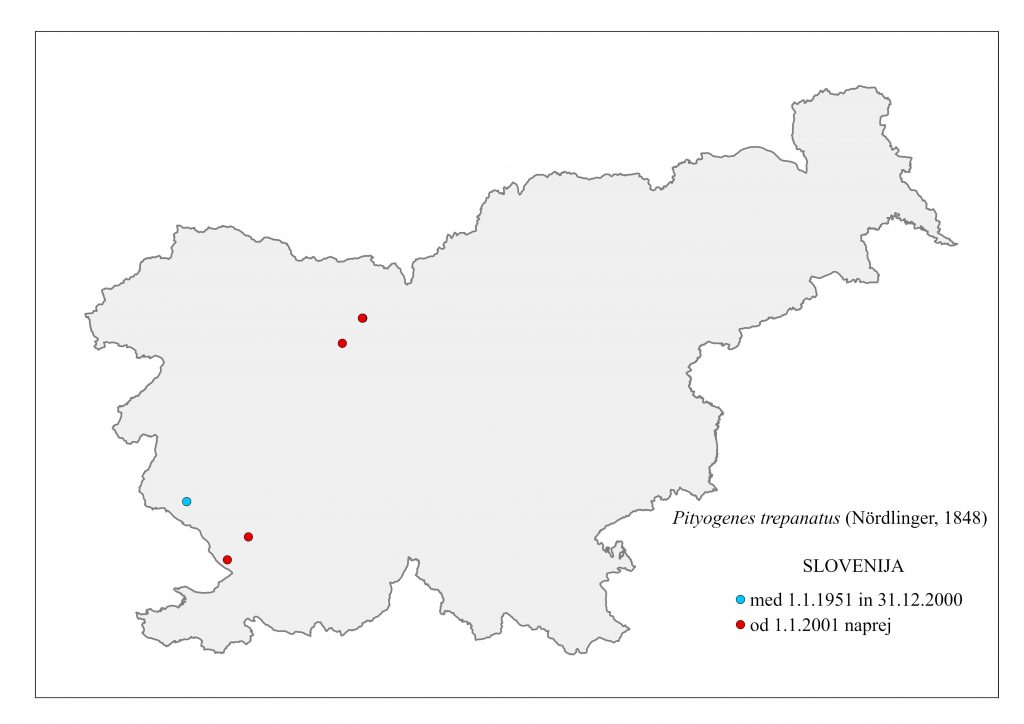30.07. Pityogenes trepanatus (Nördlinger, 1848)
Presence
E: AU BE BH BU BY CT CZ DE EN FI FR GB GE HU IT LA NL NR NT PL PT RO SL* SK SP ST SV SZ UK YU
Older catalogs and keys – citations of name
Grüne 1979: Pityogenes trepanatus Nördlinger, 1848; Freude, Harde, Lohse 1981: Pityogenes trepanatus Nördlinger; Titovšek 1988: Pityogenes trepanatus (Nördlinger); Pfeffer & Knížek 1993: P. trepanatus (Nördlinger, 1848); Pfeffer 1995: P. trepanatus (Nördlinger, 1848).
Figure 142: Pityogenes trepanatus, distribution map according to hostorical and recent data
Ecology and presence in Slovenia
The species is distributed in northern and central Europe, the Pyrenees, and the south-eastern European part of the former Soviet Union. In Slovenia it has been found only a few times, in Primorska and Notranjska on Pinus nigra, in Gorenjska only in traps (Figure 142). In literature, P. nigra and, P. sylvestris are mentioned as host species. It develops 2-3 generations per year, in the Karst it swarms for the first time in March and April. It breeds on thin-bark tree parts, mainly on branches and twigs, where it forms star-shaped tunnel systems. The brood chamber and (usually) only three maternal galleries are deeply buried in the sapwood. The length of the imagoes is 2.2-2.5 mm. The males have 3 conical denticles on the elytra apex on each side of elytra margin, the first and second being closer than the second and third. Females have only small humps instead of denticles in the same places on the elytra margin. The female has a large and deep circular depression in the middle of the forehead, which distinguishes it from P. chalcographus. This distinctly secondary species inhabits only weakened hosts.

